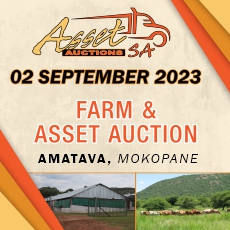Positive outlook for livestock industry for 2023/2024 summer season - Agbiz
Cattle feed on tangerine on a farm along the R45 near Franschhoek. Picture: Henk Kruger/ANA/African News Agency
Provided El Niño does not hit the country badly, the domestic harvest will benefit from the potentially lower global grain and soybean prices during the 2023/24 summer season.
So says Agricultural Business Chamber (Agbiz) chief economist Wandile Sihlobo, said yesterday.
The livestock and poultry industries have had a difficult few years due to various external shocks including animal diseases and rising input costs -yellow maize and soybean prices made for a challenging operating environment for many farmers and agribusinesses.
Agbiz said if El Niño did not hit the domestic harvest badly, the benefits of the potentially lower global prices would filter into South Africa's domestic environment.
Sihlobo said: "The upside risk that needs constant monitoring is the rand/dollar exchange, as the excessive weakness would lead to higher domestic maize and oilseeds prices for local livestock and poultry producers and, in the event of feed imports, even lift that higher. The additional risk is the severity of El Niño. We assume a moderate impact, but if severe, crop yields would take a substantial loss, and such a scenario would have price implications.
“There will be clarity on both these risks towards the end of the year when the 2023/24 season starts. For now, we maintain a generally positive view of the outlook for the livestock and poultry industries from a feed price perspective," Sihlobo said.
Sihlobo said the livestock and poultry sector hardly enjoyed the gains of a large domestic harvest of the past two seasons because it did not bring any meaningful reduction in feed prices.
For example, since December 2020, yellow maize prices had broadly traded over R3 000 per tonne while soybeans had generally been more than R5000 per tonne.
"This has been a different experience compared with prior seasons, where a large harvest would have led to a substantial price decline to much lower levels than we observed in the past two years. The major reason for this were higher global maize and soybean prices on the back of a drought in South America, rising demand in China, Covid-19-related supply chain disruptions, and the Russia-Ukraine war.
“As a small open economy, South Africa is interlinked with the global grains and oilseeds market, and domestic prices tend to follow the global price movements, and this is what we observed," Sihlobo said.
He said that with global maize and soybean prices declining notably since the start of this year, South African prices had followed a similar trend and were roughly 15% lower than the levels observed last year.
"This benefits the livestock and poultry industry, which is currently struggling with more domestic-related costs such as load shedding and (impact of) failing municipalities where various businesses have had to use their resources to maintain basic services. This has added to their cost of doing business. In addition to mainly following global price trends, large grains and oilseed supplies are in the market, which adds downward pressure on animal feed prices."
Sihlobo said the recent crop estimates from the International Grains Council also painted a good picture of global grains and oilseed supplies in the upcoming 2023/24 season, which pointed to moderate price movements.
Meanwhile, on Friday the Food and Agriculture Organization(FAO) of the United Nations reported that the benchmark index of international food commodity prices declined again in June, led by price decreases for all major cereals and most types of vegetable oils.








